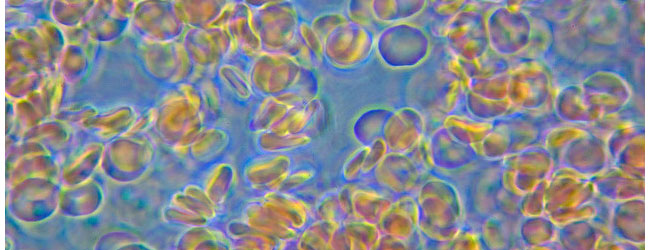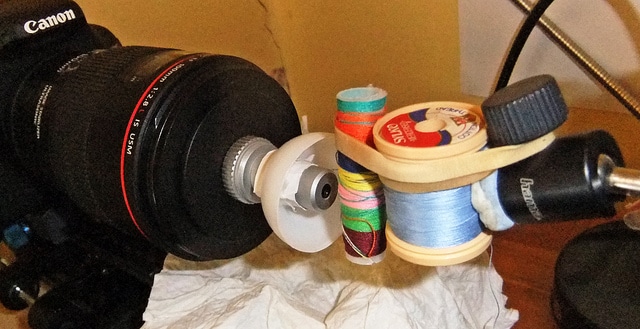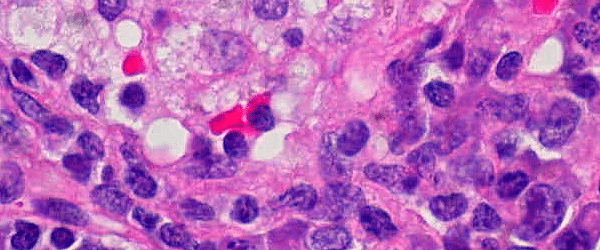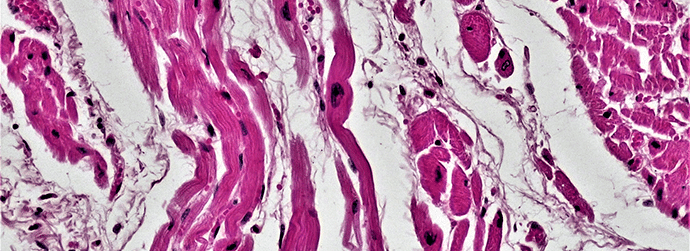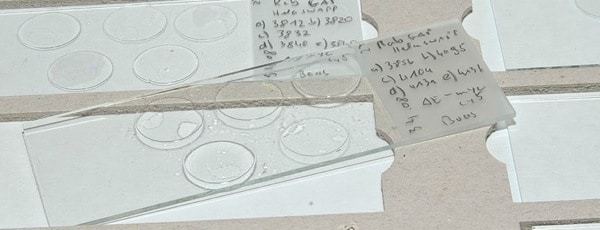Following on from the first part of the H and E 101 articles, here are the materials and recipes you’ll need for your own H and E workstation (assuming you don’t have access to a histology lab).
Many of the chemicals listed below are toxic and/or harmful. Use PPE when handling/storing, follow SOP’s in your own institute and use the COSHH and MSDS forms.
Here are the four solutions you’ll need (plus an easy guide to the gradated alcohols);
(1) Harris’ Haematoxylin Solution.
Haematoxylin 2.5 g
Ethanol 25 ml
Potassium alum (the ‘mordant’) 50 g
Deionised water 500 ml
Sodium iodate 0.5 g
Acetic acid (glacial) 20 ml
The haematoxylin needs to be oxidized to become a functional dye- this is achieved by the addition of sodium iodate. The oxidized haematoxylin (‘haematein’) then binds to the mordant which allows it to bind to nuclear material.
Haematoxylin is dissolved in ethanol, and is then added to the potassium alum, which has previously been dissolved in 500 ml of warm deionised water in a two litre flask.
The mixture is rapidly brought to the boil and the sodium iodate is then slowly and carefully added. Cool the solution by plunging the flask into cold water or into a sink containing chipped ice. When the solution is cold, add the acetic acid and the stain is ready for immediate use. The glacial acetic acid is optional, but its inclusion gives more precise and selective staining of nuclei.
Filter before use and replace every two weeks.
(2) Acid Alcohol.
Hydrochloric acid, concentrated (sp.gr.1.19) 1 ml
70% ethanol 99 ml
(3) Scotts Tap Water.
Sodium bicarbonate 2 g
Magnesium sulphate 20 g
Deionised water 1 litre
Dissolve the salts in the water. Store stock solutions at room temperature.
(4) Eosin.
Eosin Y is made up as a 1 % (w/v) solution in dH20 (ie- 1 g of Eosin Y in 100 ml of water).
Alcohol gradient
95% ethanol
Ethanol (GP grade) 95 ml
Deionised water 5 ml
80% ethanol
Ethanol (GP grade) 80 ml
Deionised water 20 ml
70% ethanol
Ethanol (GP grade) 70 ml
Deionised water 30 ml
Eosin Y solution can be bought commercially and it’s an easier option than weighing dye powder. Haematoxylin solution can also be bought as a ready-made solution, but will depend if you plan to use gallons of it!
Happy H and E staining!

